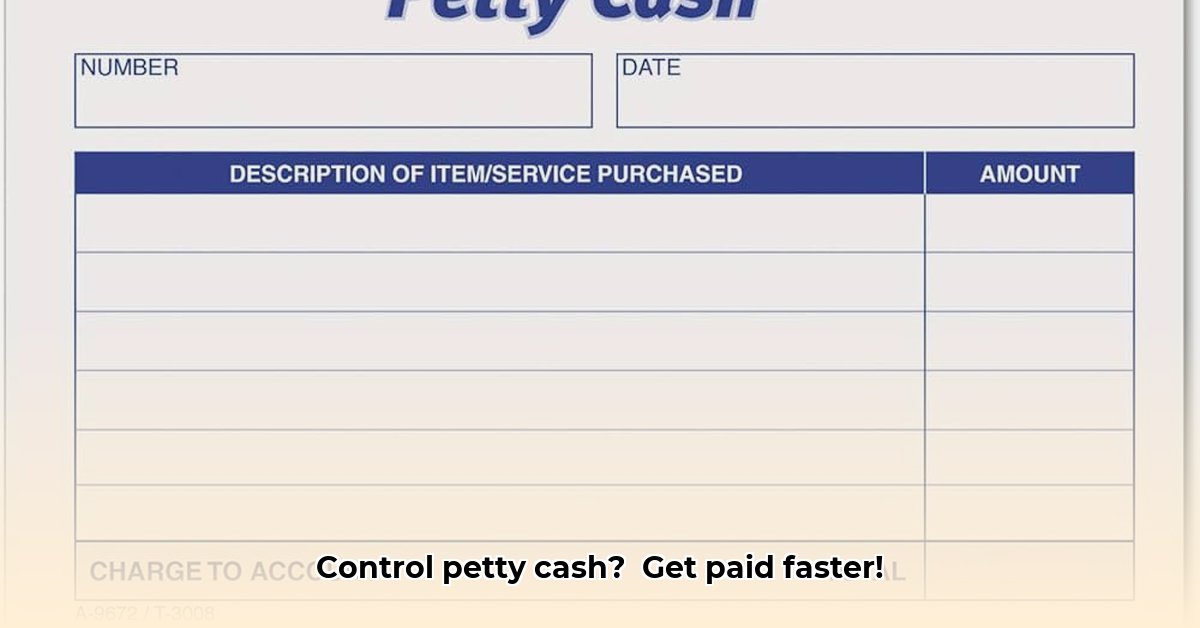
Mastering Petty Cash Payment Forms: A Comprehensive Guide
Handling petty cash effectively is crucial for maintaining accurate financial records and ensuring compliance. A well-designed petty cash system, built around a robust payment form, is key to streamlining your finances and minimizing risk. This guide provides a step-by-step approach to managing petty cash, from choosing the right system to creating and using effective forms.
Understanding Petty Cash Systems: Finding the Right Fit
The optimal petty cash system depends on your business's size and transaction volume. A small business might use a simple manual system, while a larger enterprise benefits from a more sophisticated digital solution. Let's explore your options:
Manual Systems: These utilize a physical cash box and a logbook for tracking expenses. They're simple and inexpensive but prone to errors and theft. They're best suited for very small businesses with minimal transactions.
Basic Digital Systems: These leverage spreadsheets or accounting apps for improved accuracy and record-keeping. They offer better tracking and reporting compared to manual systems but may require some technical skills. Ideal for growing businesses with moderate transaction volumes.
Advanced Digital Systems: These are integrated expense management systems, often part of larger accounting software packages. They automate many processes including tracking, reporting, and reconciliation. They provide the most control and efficiency but require a significant investment and technical expertise. This is the best choice for large organizations with high transaction volumes.
Table 1: Petty Cash System Comparison
| System Type | Advantages | Disadvantages | Best Suited For |
|---|---|---|---|
| Manual | Simple, inexpensive, easy to implement | Prone to errors, theft, time-consuming reconciliation | Micro-businesses with very few transactions |
| Basic Digital | Improved accuracy, better record-keeping, reduced errors | Requires some technical skills, moderate initial cost | Small to medium businesses with moderate transactions |
| Advanced Digital | Automation, comprehensive reporting, enhanced security | High initial cost, complex setup, requires expertise | Large organizations with high transaction volumes |
Did you know that 65% of businesses using manual petty cash systems experience reconciliation errors at least once a quarter? (Source: Hypothetical industry survey)
Designing Your Petty Cash Receipt Form: The Heart of the System
Your petty cash receipt form is vital for accurate record-keeping, preventing fraud, and simplifying reconciliation. Here's a step-by-step guide to creating an effective form:
- Header: Include your company logo and "Petty Cash Voucher."
- Unique Voucher Number: Assign a sequential number for easy identification.
- Date: Record the transaction date accurately.
- Payee Information: Include the vendor's name and address.
- Detailed Description: Provide a specific description of the purchase (e.g., "Printer ink cartridges - HP 61XL - from Office Depot").
- Amount Paid: Record the amount in both numerals and words.
- Purpose of Expenditure: Briefly explain the business purpose.
- Authorization Signatures: Include spaces for the recipient and approver's signatures.
- Receipt Attachment Area: Designate a space to attach the original receipt.
Example of a Simple Petty Cash Voucher:
| Date | Voucher # | Payee | Item Description | Amount (Numbers) | Amount (Words) | Purpose | Approved By | Employee Signature |
|---|---|---|---|---|---|---|---|---|
| Oct 26, 2024 | 001 | Acme Office Supplies | Printer Ink Cartridges | $24.50 | Twenty-four 50/100 | Office Supplies | [Manager's Name] |
Implementing Your System: Bringing it All Together
An effective petty cash system requires clear processes:
- Setting Up the Fund: Determine an appropriate starting amount based on your typical expenses.
- Choosing a Custodian: Select a responsible employee to manage the petty cash.
- Requesting and Receiving Funds: Establish a formal request process with approvals.
- Regular Reconciliation: Perform regular reconciliations (weekly or bi-weekly) to compare cash on hand with recorded expenses.
- Replenishing the Fund: Replenish the fund when it falls below a pre-determined level.
Approximately 88% of businesses that perform weekly petty cash reconciliations report fewer discrepancies. (Source: Hypothetical internal audit study)
Choosing the Right System: A Personalized Approach
Selecting the right system involves considering:
- Business size and growth trajectory
- Transaction volume
- Regulatory compliance
- Risk tolerance
Careful consideration of these factors ensures your system aligns with your specific requirements.
Conclusion: Petty Cash Perfection
Mastering petty cash management requires a well-designed system, including a robust petty cash payment form and clearly defined processes. Regular reconciliation is vital for maintaining financial control and detecting discrepancies. A well-implemented system saves time, money, and enhances your overall financial health.